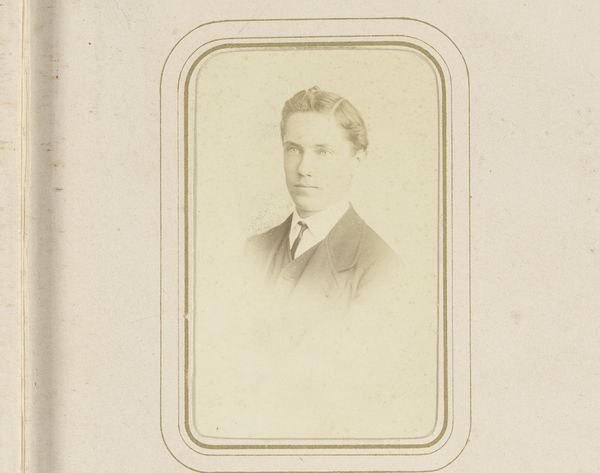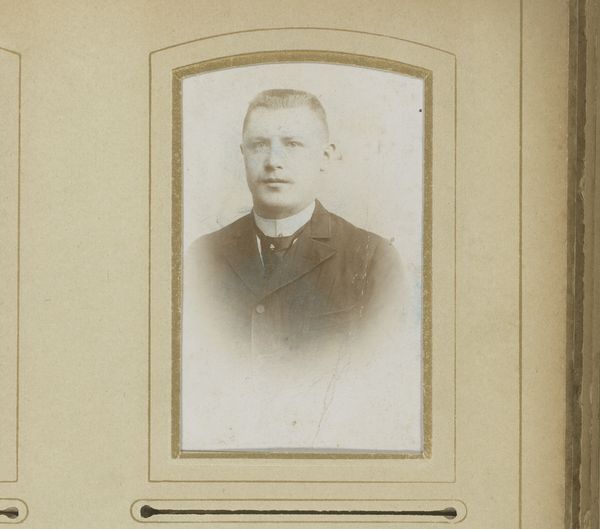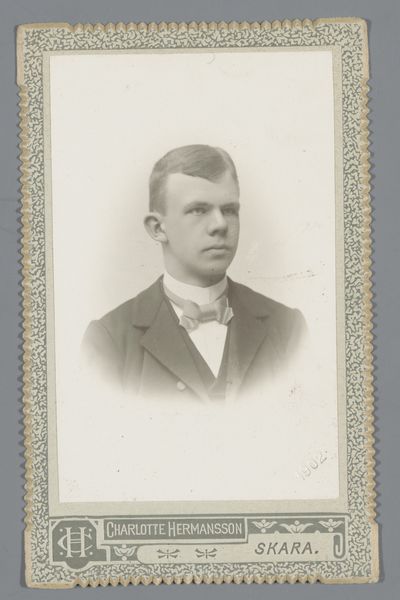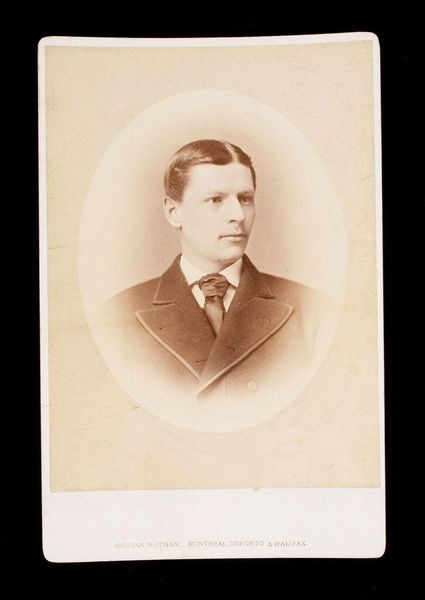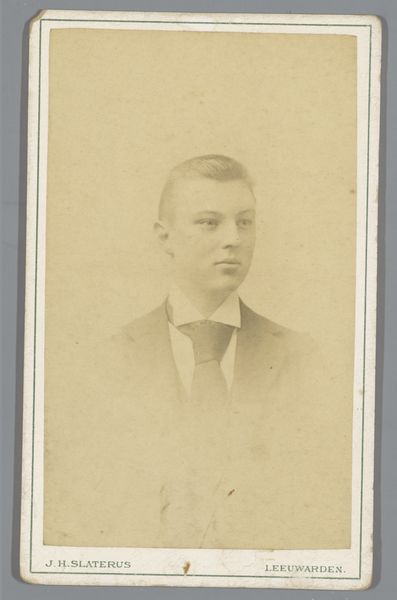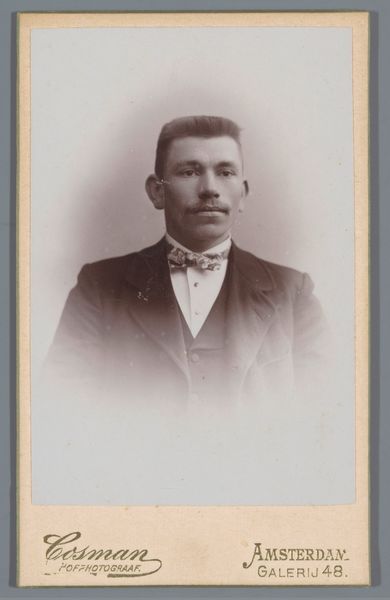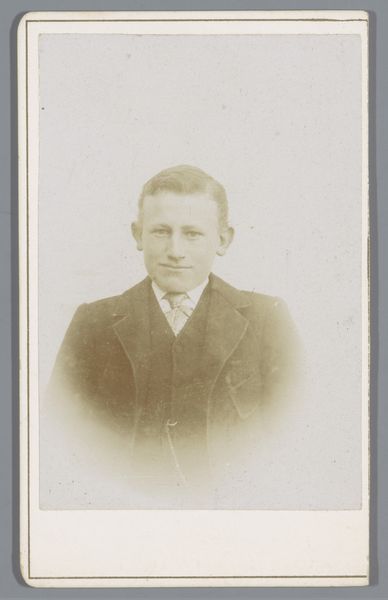
photography
#
portrait
#
photography
Dimensions: height 105 mm, width 63 mm
Copyright: Rijks Museum: Open Domain
This is an undated photograph by Henri de Louw, showing an unknown man. It’s a fascinating example of the democratization of portraiture in the late 19th and early 20th centuries. The photograph's meaning is shaped by its visual codes, and the cultural references of its time. This is likely the Netherlands, given that the photographer's studio was located in The Hague. During this period, photography was becoming more accessible to the middle class, with studios like De Louw's offering affordable portraits. The sitter's attire – a suit and bow tie – suggests a certain level of social standing, but not necessarily great wealth. The very existence of this photograph speaks to the changing social landscape, where more people could participate in the creation and preservation of their own image. To truly understand this photograph, we would need to delve into the archives of studios like De Louw’s, and the social history of the Netherlands during this period. The meaning of art is always contingent on its social and institutional context.
Comments
No comments
Be the first to comment and join the conversation on the ultimate creative platform.
